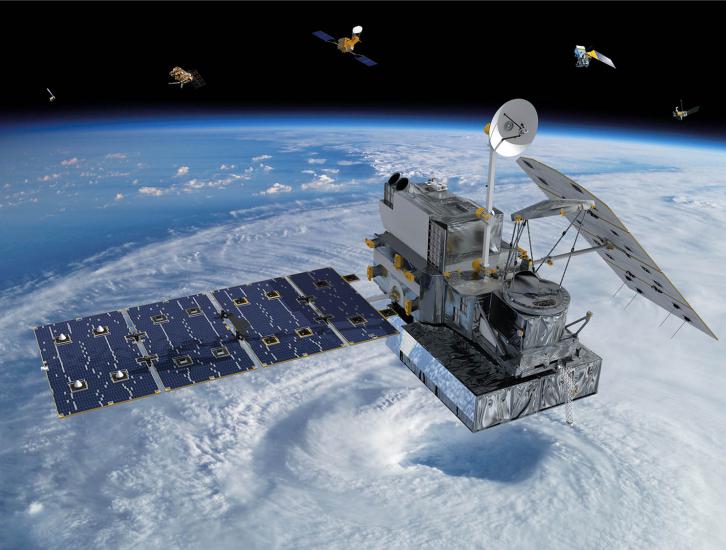
GPM Orbit Boost
Updated: Nov. 8, 2023
George Huffman, GPM Project Scientist
The GPM Core Observatory (GPM-CO) satellite performed two orbit boost maneuvers on Nov. 7 and 8, 2023 that raised its altitude from 400km to 435km. The goal of these boosts is to restore the GPM-CO's lifespan closer to the original estimates of ending in the early 2030’s. Recent lifespan estimates have been getting shorter due to unexpectedly high solar activity, which causes additional atmospheric drag on the spacecraft. The primary goal of restoring GPM-CO’s lifespan is to allow the GPM mission to overlap with the satellites associated with the future Atmosphere Observing System (AOS) mission planned by NASA, JAXA, and other agencies, allowing for intercalibration of instruments between the GPM and AOS missions.
As a result of these maneuvers, the observing parameters of data collected by the GPM Microwave Imager (GMI) and Dual-frequency Precipitation Radar (DPR) instruments changed, including the footprint sizes and Earth incidence angle (a footprint increase of 8.8% and an incidence angle of 0.4°) . The algorithms which process these data must be updated to accommodate these changes, including the Level 2 GPROF, DPR, and CORRA algorithms; the Level 3 datasets built from these; and the Level 3 Integrated Multi-satellitE Retrievals for GPM (IMERG). Filenames will be incremented for these changes accordingly, for example 2A DPR V07B to V07C and IMERG Early Run V06D to V06E.
There will be a gap in data production for the GPROF GMI, DPR, and CORRA products while these updates are taking place, which could extend to several months. During this time the instrument data will continue to be collected, but processing will be held until the revised algorithms are approved for release. During the boost maneuver, near real-time Level 1 GMI products will continue to be produced as usual, but Level 1 science products may be halted for an estimated 36 hours.
In contrast, the GPM team is able to continue production of the IMERG Early and Late products without input from the GMI instrument, but using all of the other input datasets from the passive microwave instruments in the GPM Constellation, the geosynchronous IR satellites, and all of the ancillary data. Calibration of both IMERG Early and Late Run products, which typically takes place on an ongoing basis using inputs from CORRA, will be frozen using the latest data from before the orbit boost maneuver. Because the IMERG Final Run is computed about 3.5 months after observation time, the IMERG team believes that the revised GPROF, DPR, and CORRA algorithms should be in place by the time the V07 IMERG Final needs them for processing the first month that includes data affected by the boost, namely for November 2023 (which we expect to compute sometime in March 2024). If not, Final processing will be held back until this is true.
Please check back on this page for the latest updates on the GPM orbit boost maneuver and resulting impacts to GPM data products.
For questions, please contact the Precipitation Processing System (PPS) helpdesk at: helpdesk@mail.pps.eosdis.nasa.gov

